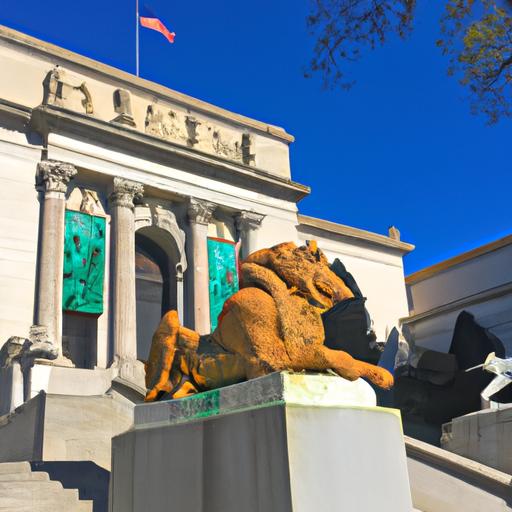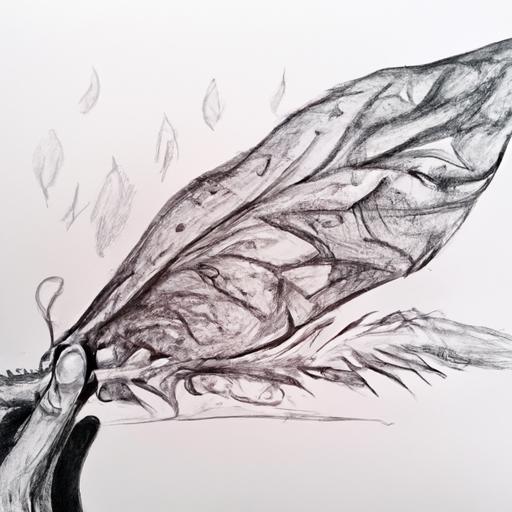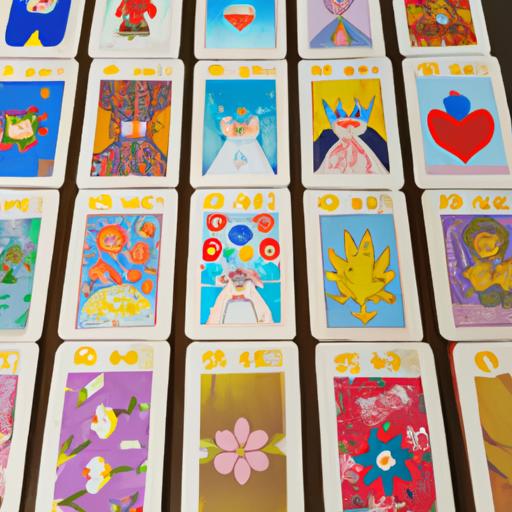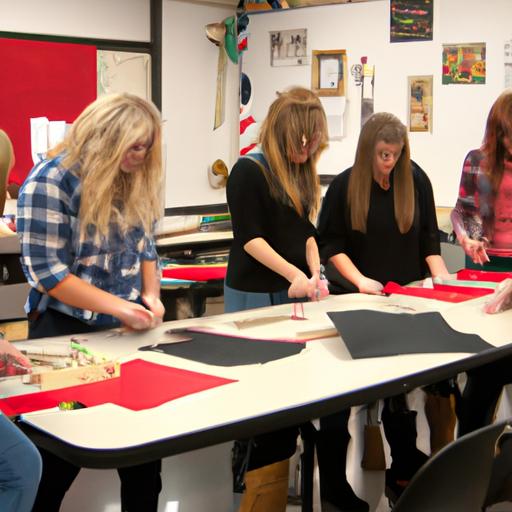Art has always been a way for humans to express their creativity and culture. From cave paintings to Renaissance masterpieces, traditional art has captivated audiences for centuries. But have you ever wondered about the patterns and trends behind the purchasing of traditional art? Join me as we delve into the fascinating world of traditional art purchasing patterns and explore how they have evolved over time.
Definition and Significance of Traditional Art Purchasing Patterns
Traditional art purchasing patterns refer to the trends and behaviors observed in the acquisition of art that reflects the cultural heritage and traditional artistic styles of a particular region or community. These patterns provide valuable insights into the preferences, values, and societal influences that shape our artistic choices.
Understanding traditional art purchasing patterns is essential for several reasons. Firstly, it allows us to appreciate the historical and cultural significance of traditional art forms. By examining how these patterns have evolved, we gain a deeper understanding of the cultural shifts and influences that have shaped the art world.
Secondly, traditional art purchasing patterns offer valuable insights for artists, collectors, and enthusiasts alike. Artists can gain a better understanding of the market demands, enabling them to create art that resonates with their target audience. Collectors and enthusiasts, on the other hand, can make informed decisions when acquiring traditional art, ensuring they align with their personal tastes and investment goals.
Evolution of Traditional Art Purchasing Patterns over Time
Traditional art purchasing patterns have undergone significant transformations throughout history. In ancient civilizations, art was primarily commissioned by rulers and religious institutions to propagate their ideologies and commemorate important events. The accessibility of art was limited to the elite classes, with the general population having minimal opportunities to acquire traditional artwork.
As societies progressed, art began to be embraced by a broader audience. The Renaissance era witnessed the emergence of a more diverse art market, with patrons from various social classes commissioning artworks. This marked a shift in traditional art purchasing patterns, making it more accessible to a wider range of individuals.
In the modern era, traditional art purchasing patterns have witnessed yet another transformation. The globalization of the art market, advancements in technology, and changing societal values have all contributed to a more diverse and dynamic art landscape. Today, traditional art can be purchased not only through physical galleries and auctions but also through online platforms and virtual exhibitions, expanding the reach and accessibility of traditional art to a global audience.
In the subsequent sections, we will explore the factors influencing traditional art purchasing patterns, examine their regional variations, and delve into the impact of the digital age on the world of traditional art acquisition. So, let’s embark on this captivating journey and unravel the intricate threads of traditional art purchasing patterns, one step at a time.
Stay tuned for Section 2, where we will explore the various factors that influence traditional art purchasing patterns.
Factors Influencing Traditional Art Purchasing Patterns
Art is a reflection of culture, and traditional art purchasing patterns are deeply influenced by cultural and economic factors. Let’s explore how these factors shape the choices and preferences of art enthusiasts and collectors.
Cultural Influences on Traditional Art Purchasing Patterns
Cultural influences play a pivotal role in determining the demand and popularity of traditional art. Different cultures have their unique artistic traditions, styles, and symbols that hold significant meaning within their communities. These cultural influences can be observed in the themes, subject matter, and artistic techniques employed in traditional art.
For example, in Asian countries like China and Japan, traditional art often includes depictions of nature, landscapes, and calligraphy. These themes are deeply rooted in their cultural heritage and hold symbolic meanings that resonate with the local population. As a result, traditional art purchasing patterns in these regions tend to prioritize artworks that embody these cultural elements.
Similarly, in Western countries, traditional art may revolve around religious or historical narratives, portraiture, or still life. These cultural influences shape the preferences of collectors and buyers, as they seek artworks that align with their cultural backgrounds or personal interests.
Economic Factors Shaping Traditional Art Purchasing Patterns
Economic factors also significantly impact traditional art purchasing patterns. The value and demand for traditional art are intricately tied to the economic conditions and market dynamics of the art world. Factors such as wealth distribution, income levels, and market trends influence the accessibility and affordability of traditional artworks.
In times of economic prosperity, there tends to be a surge in the purchasing of traditional art. Affluent individuals and institutions have more disposable income to invest in artworks, driving up demand and prices. Conversely, during economic downturns, traditional art purchasing patterns may experience a decline as individuals prioritize essential expenses over luxury purchases.
Market trends and speculations also sway traditional art purchasing patterns. Art collectors and investors closely monitor market fluctuations, seeking artworks that may appreciate in value over time. This investment-driven approach can influence the demand for specific artists or art styles, leading to shifts in traditional art purchasing patterns.
Moreover, government policies and cultural initiatives can have a direct impact on traditional art purchasing patterns. In some countries, governments provide financial incentives or support to promote local artists and traditional art forms. These initiatives encourage individuals to invest in traditional art, fostering a vibrant art market that sustains cultural heritage.
Understanding the cultural and economic factors that shape traditional art purchasing patterns allows us to appreciate the intricate relationship between art and society. In the following sections, we will explore traditional art purchasing patterns across different regions and examine the influence of the digital age on the world of traditional art acquisition. So, let’s continue our journey and unravel the rich tapestry of traditional art purchasing patterns.
Stay tuned for Section 3, where we will explore traditional art purchasing patterns across different regions.
Traditional Art Purchasing Patterns Across Different Regions
Traditional Art Purchasing Patterns in Western Countries
Western countries have a rich history of art appreciation and patronage, with traditional art playing a significant role in their cultural heritage. Traditional art purchasing patterns in these regions reflect a diverse range of influences and preferences.
In countries like the United States and the United Kingdom, individualism and personal expression are highly valued. This is reflected in the traditional art purchasing patterns, where collectors often seek out unique and innovative artworks that challenge traditional norms. Contemporary art forms that fuse traditional techniques with modern concepts have gained popularity among Western art enthusiasts.
Additionally, Western countries have a strong tradition of supporting local artists and artisans. There is a growing trend of purchasing art directly from artists’ studios or local galleries, fostering a sense of community and encouraging a more personal connection between the collector and the artwork.
Traditional Art Purchasing Patterns in Asian Countries
Asia is a diverse continent with a rich tapestry of traditional art forms. Traditional art purchasing patterns in Asian countries are often deeply rooted in cultural and spiritual beliefs, reflecting a strong connection to heritage and traditions.
In countries like China and Japan, where traditional art forms like calligraphy, ink wash painting, and woodblock prints have flourished for centuries, there is a deep reverence for artistic mastery and craftsmanship. Collectors in these regions often prioritize the preservation of traditional techniques and seek out artworks that embody the essence of their cultural heritage.
Furthermore, Asian countries have seen a resurgence in the appreciation and acquisition of traditional art in recent years. Increasingly, collectors are recognizing the value and uniqueness of traditional art forms, leading to a revitalization of traditional art markets and the establishment of dedicated institutions and events to promote and showcase traditional art.
Traditional Art Purchasing Patterns in African Countries
Traditional art in Africa is incredibly diverse, encompassing a wide range of styles, materials, and cultural influences. Traditional art purchasing patterns in African countries are shaped by a deep connection to ancestral traditions, spirituality, and community.
In many African countries, traditional art serves as a means of storytelling, preserving history, and celebrating cultural identity. Artworks often carry symbolic meanings, conveying messages of unity, strength, and spirituality. Traditional African art is highly sought after by collectors worldwide, with a growing appreciation for its aesthetic beauty and cultural significance.
Moreover, the rise of the global art market has provided African artists and artisans with increased visibility and opportunities for international recognition. Traditional art purchasing patterns in African countries are evolving as more collectors and enthusiasts embrace the unique artistic expressions of the continent, supporting local artists and contributing to the preservation of traditional art forms.
Stay tuned for Section 4, where we will explore the impact of the digital age on traditional art purchasing patterns.
Traditional Art Purchasing Patterns in the Digital Age
The digital age has brought about significant changes in various aspects of our lives, and the world of traditional art is no exception. In this section, we will explore how technology has impacted traditional art purchasing patterns and the role of online platforms in shaping the way we acquire and appreciate traditional art.
Impact of Technology on Traditional Art Purchasing Patterns
Technology has revolutionized the art world, providing artists, collectors, and enthusiasts with new opportunities and avenues to engage with traditional art. One of the most notable impacts of technology on traditional art purchasing patterns is the increased accessibility and visibility of art. Digital platforms have eliminated geographical barriers, allowing individuals from all corners of the world to explore and purchase traditional art that was once limited to specific regions.
Moreover, technology has also democratized the art market, empowering artists and independent sellers to showcase and sell their work directly to a global audience. Artists can now leverage social media platforms, online galleries, and artist websites to promote and sell their traditional art without the need for intermediaries or traditional brick-and-mortar galleries.
Online Platforms and their Influence on Traditional Art Purchasing Patterns
Online platforms have emerged as key players in the traditional art market, offering a convenient and immersive experience for art enthusiasts. These platforms provide a vast array of traditional art pieces, ranging from paintings to sculptures, ceramics, and textiles. With just a few clicks, collectors can explore a multitude of traditional art styles and find pieces that resonate with their preferences and aesthetic sensibilities.
Furthermore, online platforms often incorporate features such as detailed descriptions, high-resolution images, and customer reviews, enhancing the overall purchasing experience. Buyers can learn about the cultural significance of the artwork, read about the artist’s background, and gain insights into the materials and techniques used in creating the piece. This transparency and information accessibility aid collectors in making well-informed decisions when acquiring traditional art.
Online platforms also facilitate direct communication between buyers and sellers, fostering a sense of connection and trust. Through messaging systems or virtual consultations, collectors can engage in meaningful conversations with artists, gaining deeper insights into the inspiration behind the artwork and establishing personal connections that go beyond the transactional nature of the purchase.
As we continue our exploration of traditional art purchasing patterns, we will uncover the changing trends in preferences for traditional art styles and the emerging interest in supporting local artists and artisans. So, stay tuned for Section 5, where we will dive into these fascinating aspects of traditional art acquisition in the modern world.
Stay tuned for Section 5, where we will explore the changing trends in traditional art purchasing patterns.
Changing Trends in Traditional Art Purchasing Patterns
As time progresses, traditional art purchasing patterns continue to evolve, reflecting the changing tastes and preferences of art enthusiasts. Let’s explore some of the key trends that have emerged in recent years, reshaping the way we acquire traditional artworks.
Shifts in Preferences for Traditional Art Styles
Traditional art encompasses a wide array of styles, each with its unique characteristics and aesthetic appeal. Over time, we have witnessed shifts in preferences for different traditional art styles, as new generations bring forth their own visions and interpretations.
Contemporary art movements have influenced traditional art purchasing patterns, with a growing interest in modern interpretations of traditional styles. Artists are blending traditional techniques with contemporary elements, creating innovative and captivating artworks that appeal to a wider audience. This fusion of old and new breathes fresh life into traditional art forms, attracting collectors who seek a balance between tradition and innovation.
Emerging Interest in Supporting Local Artists and Artisans
In recent years, there has been a resurgence of interest in supporting local artists and artisans. As globalization has brought art from around the world to our fingertips, there is a growing desire to connect with the artists in our local communities. This shift in traditional art purchasing patterns is driven by a desire to foster local talent, preserve cultural heritage, and support the local economy.
Art enthusiasts are increasingly seeking out local art fairs, galleries, and exhibitions to discover hidden gems within their own communities. By purchasing artworks directly from local artists and artisans, individuals can forge personal connections with the creators and gain a deeper appreciation for the cultural context in which the art was produced.
Moreover, the rise of social media platforms and online marketplaces has made it easier than ever to connect with and support local artists. Artists can showcase their work to a global audience, while collectors and enthusiasts can explore and acquire traditional art pieces from artists they may have never discovered otherwise.
In conclusion, the ever-changing landscape of traditional art purchasing patterns reflects the dynamic nature of our society. As we witness shifts in preferences for traditional art styles and a growing interest in supporting local artists and artisans, it is clear that traditional art continues to hold a special place in our hearts. By embracing these changing trends, we not only contribute to the preservation of cultural heritage but also ensure the continued vibrancy and relevance of traditional art in the modern world.
Stay tuned for Section 6, where we will gaze into the future and explore the potential outlook for traditional art purchasing patterns.
Future Outlook for Traditional Art Purchasing Patterns
As we stand at the crossroads of art history, contemplating the future of traditional art purchasing patterns, we find ourselves surrounded by a myriad of possibilities and potential shifts. The art world is in a constant state of evolution, and traditional art purchasing patterns are no exception. Let’s explore some predictions and factors that may shape the future of traditional art acquisition.
Predictions and Potential Changes in Traditional Art Purchasing Patterns
-
Embracing Diversity: In the coming years, we can expect a greater emphasis on diversity in traditional art purchasing patterns. As societal values continue to evolve, there will be a growing appreciation for art that represents a broader range of cultures, perspectives, and underrepresented voices. Collectors and enthusiasts will seek out traditional art that tells unique stories and challenges conventional norms.
-
Sustainability and Ethical Consumption: With increasing awareness about environmental issues and fair trade practices, the future of traditional art purchasing patterns may see a shift towards sustainability and ethical consumption. Art lovers will prioritize supporting artists who use eco-friendly materials and engage in ethical production processes. Additionally, there may be a rise in demand for traditional art that promotes social justice and cultural preservation.
-
Virtual Reality and Augmented Reality: Technology continues to revolutionize the way we experience art. Virtual reality (VR) and augmented reality (AR) technologies have the potential to transform traditional art purchasing patterns by offering immersive and interactive experiences. Imagine being able to virtually explore a gallery showcasing traditional art from around the world or visualize how a piece of art would look in your own space before making a purchase.
Factors That May Shape the Future of Traditional Art Purchasing Patterns
-
Globalization and Accessibility: The internet has made it possible for traditional art to reach a global audience. As online platforms continue to flourish, traditional art purchasing patterns may become more inclusive and accessible. Artists and collectors can connect across continents, opening up opportunities for cross-cultural exchange and expanding the market for traditional art.
-
Changing Demographics: The demographic composition of art buyers is evolving, with younger generations playing an increasingly significant role. Millennials and Gen Z are more likely to embrace traditional art that aligns with their values and personal narratives. This generational shift may influence traditional art purchasing patterns, favoring contemporary interpretations of traditional art forms and blurring the boundaries between traditional and modern art.
In conclusion, the future of traditional art purchasing patterns holds immense potential for growth, diversity, and innovation. As we navigate the ever-changing art landscape, it is crucial to embrace new technologies, support sustainable practices, and celebrate the rich cultural heritage embedded in traditional art. So, whether you’re an artist, collector, or enthusiast, the future awaits, promising a tapestry of traditional art that continues to captivate and inspire.
Thank you for joining me on this journey through traditional art purchasing patterns. If you missed any sections, feel free to explore the entire article to gain a comprehensive understanding of this captivating topic.





